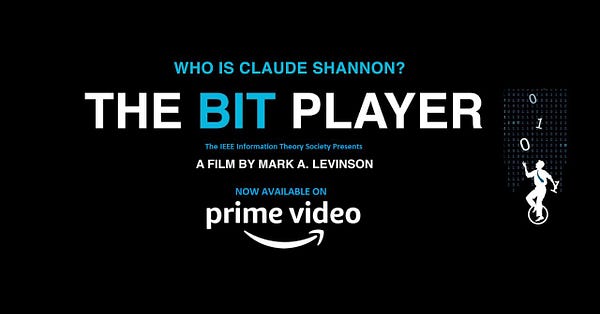1: Exploitation vs Exploration, Galactic Mass-Transit System, and Doom
“exploitation vs exploration”
It’s my first time. Be gentle. ¯\_(ツ)_/¯
Investing & Business
-Michael Mauboussin: “exploitation vs exploration”
Interview with Michael Mauboussin on Sean Delaney’s podcast (published July 19), had this interesting quote about the problem of “exploitation vs exploration”:
"Exploitation vs exploration: It's really interesting to ask, from a resource allocation point of view, how much should I allocate to exploitation and how much to exploration. If you look at nature, in environments that don't change much, they're skewed towards exploitation. Why? Because exploration's not that valuable because stuff doesn't change, right? By contrast, in rapidly changing ecosystems, there is a much greater premium put on exploration, because what you're exploiting is going to go away and you need to figure out what's going to be next.
I'd love to think about a way to codify that, to some degree, in a corporate setting. The ways that we can think about measuring rate of change in the environment, and as a consequence, ways to think about, maybe not optimal, but at least directionally correct allocations of exploitation vs exploration." -Michael Mauboussin
If you believe that technological change has accelerated the pace of change in business (and society in general) and that it’s harder to find truly durable businesses with near-impenetrable moats, then it probably makes sense to spend more of your time on exploration and focus on flexibility and adaptability rather than on more static characteristics. NZS Capital has some good papers on this, such as ‘Redefining Margin of Safety’.
-Steven Levy on Facebook
Interview with Steven Levy on Jim Rutt’s show about his new book, “Facebook: The Inside Story”. Like for his book about Google, ‘In the Plex’, Levy had long-term inside access to the company and its executives, including Zuckerberg and Sandberg. I haven’t read the book yet, but thought the podcast interview was interesting and gave a good overview of the strong points and weaknesses of the company.
Here’s an excerpt:
Jim: The problem with micro-targeting is, I can send those racist ads just to racists who aren’t likely to complain. And I think that’s something that the affordances that Facebook provides to all marketers, but particularly political marketers, fundamentally changes the game. Well, it doesn’t fundamentally change the game, but you combine it with the cost advantage. Because you could do micro-targeting with direct mail but it was very expensive. You can do micro-targeting on Facebook, and it’s really cheap and allows you to send different messages to different people and not be held publicly accountable for your advertising.
Steven: Yeah. Yeah. As you say, it doesn’t change the game, it advances it. But it advances it so far that it does change the game. I was saying that if you do the same thing at a bigger speed in a lower cost, it actually becomes a different thing, because you’re able to use it, in a sense, where it affects the situation much more than if you did it at a lower level. It’s like saying the computers we use now in our hands are different devices than those things that we used in the early 1980s.
So I think the micro-targeting becomes a very big issue because Facebook enables that to happen, and as you say, these political marketers can identify people who are susceptible to messages. So Facebook’s model is to deliver advertisements to people who are likely to respond to it. And Facebook argues that you should welcome these advertisements because they are relevant to you. They are going to give you buying opportunities to things that you actually want to buy. […]
But where it’s different, is when Facebook understands enough about you to know where your weakness is, and then sells your contact to people, allows people to contact you to explore your weakness. That’s something different. People aren’t so happy when they hear they’re being manipulated by people, you know? People are able to know their weaknesses and then exploit them. That’s something different, of different character. And we’re having a debate now about whether that’s kosher to do in a political campaign. Some people think that Facebook or anyone else shouldn’t be allowed to do that degree of micro-targeting in a campaign.
There’s a full transcript of the interview here, if you prefer to read.
-Everbridge Now Operating in Every Region in the World
[The company] today announced two national alerting system customers that will be powered by Everbridge Public Warning – one in The Middle East and the other in Africa. Expected to be fully deployed in the second half of 2020, further details of the projects may be available after the completion of all implementation processes. With the addition of these two new countries, Everbridge extends its Public Warning platform to every major region of the world.
This is an interesting company providing a very valuable service to its customers (there’s an overview of what they do in the analyst day presentation).
If you can mitigate or avert even just one crisis that would disrupt your business or country and/or harm your employees or citizens, how much is that worth to you? It’s a bit like insurance: When all is going well, you may wonder why you’re paying, but if things go wrong, you’re glad you spent the tiny amount (compared to most expenses).
-AWS Releases ‘Twitch as a Service’
Interesting new service launched by AWS:
Amazon Interactive Video Service (Amazon IVS) is a managed live streaming solution that is quick and easy to set up, and ideal for creating interactive video experiences. Send your live streams to Amazon IVS using streaming software and the service does everything you need to make low-latency live video available to any viewer around the world, letting you focus on building interactive experiences alongside the live video.
It sounds like a way to embed the kind of video infrastructure you get on Twitch, but on any other site that you control (with your own design, branding, etc).
It’s a building block, so in itself it’s not really much… But it’ll be interesting to see what devs can do with it. As Blake Robbins suggested, streaming stars that already have their own strong brand may decide to build their own sites based on this kind of infrastructure (which may have happened without this, but now the Twitch disruptors may end up on Amazon’s infrastructure):
-Nvidia: Highlights from July 10 Presentation:






-“Basic Bull Thesis for Gaming”

-Podcast Interview with Bill Miller


Science & Technology
-GPT-3 and Compute Needed to Train AI Models
The above graph comes from a paper by OpenAI. It shows the compute used to train different models, including the one that has been making waves lately, the third version of their generative pre-training (GPT) language model, aka GPT-3.
As pointed out by Gavin Baker, the graph “ looks like it is growing exponentially, but it is already scaled *logarithmically*”.
OpenAI states in the paper: “Practical large-scale pre-training requires large amounts of computation, which is energy-intensive: training the GPT-3 175B consumed several thousand petaflop/s-days of compute during pre-training, compared to tens of petaflop/s-days for a 1.5B parameter GPT-2 model […] Though models like GPT-3 consume significant resources during training, they can be surprisingly efficient once trained: even with the full GPT-3 175B, generating 100 pages of content from a trained model can cost on the order of 0.4 kW-hr, or only a few cents in energy costs”

-Freeman Dyson’s Galactic Mass-Transit System


Think of a gravitational slingshot, but with a supercharger:
More details here.
-New Claude Shannon Documentary on Amazon Prime Video
I haven’t had a chance to see it yet, but I really enjoyed the recent biography of Shannon (a world-changing genius that is too little-known by most people — another one that should get more books and documentaries is John von Neumann):
-RISC-V Open-Source Instruction Set
Good interview with David Patterson, mostly about instruction set design and the tradeoffs between various CPU architectures, RISC-V open source arch, etc (audio-only podcast can be found here):
The Arts
-Can it run DOOM?
This is deep on the geeky end of culture, but here’s a 32 socket computer with 32 CPUs that each have 28 cores, for a total of 896 cores. Some genius found a way to play Doom on the computer’s task manager in Windows by using each core by a certain amount, turning each one into a pixel that can be made darker or lighter. It’s kind of mind-boggling. See for yourself (play the video to see it in action):
Here’s what the 32-socket monster looks like:
-I’m More Afraid of Things Staying the Same
These Nick Cave lyrics pop to mind once in a while, especially in times of great confusion and uncertainty. I have to remember that things always change, and stability is a temporary illusion, and that it’s better to accept it and embrace it and to try to make the best of it rather than be dragged along kicking and screaming. If you believe that the world can be better, then change is just an opportunity to keep improving it, little by little (over time it adds up):















